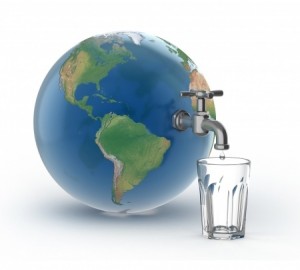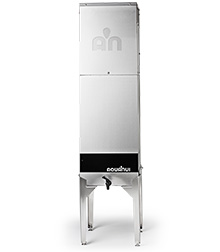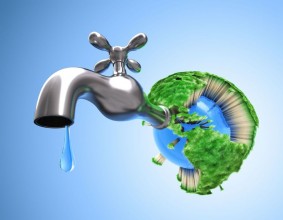 Water scarcity currently affects around 2.8 billion people around the world, on all continents, at least one month out of every year and more than 1.2 billion people lack the access to clean drinking water. what causes water scarcity. There are 2 main factors that may result in water scarcity:
Water scarcity currently affects around 2.8 billion people around the world, on all continents, at least one month out of every year and more than 1.2 billion people lack the access to clean drinking water. what causes water scarcity. There are 2 main factors that may result in water scarcity:
- Physical water scarcity: physical water scarcity is a result of inadequate natural water resources to supply a region’s demand. That can be rendered to climate change, global warming, long drought seasons, etc.
- Economic water scarcity: Economic water scarcity is a result of poor management of the sufficient available water resources. According to the United Nations Development Program, the latter is found more often to be the cause of countries or regions experiencing water scarcity, as most countries or regions have enough water to meet household, industrial, agricultural, and environmental needs.
Water scarcity involves water stress, water shortage or deficits, and water crisis. While the concept of water stress is relatively new, it can be simply explained as the failure to obtain:
 A Fresh water source: Less than 1% of the fresh water on this planet is accessible. Fresh water is unevenly distributed among nations due to lack of one of the two above mentioned factors leading to water scarcity. Obtaining fresh water during a given period of time is resulting to many depletion and deterioration of available water resources.
A Fresh water source: Less than 1% of the fresh water on this planet is accessible. Fresh water is unevenly distributed among nations due to lack of one of the two above mentioned factors leading to water scarcity. Obtaining fresh water during a given period of time is resulting to many depletion and deterioration of available water resources.- Regular fresh water: Floods cause an increase in water pollution. The increase of human demand and the overuse of water in some places puts another stress on having a careful proper use of fresh water
According to the Falkenmark Water Stress Indicator, a country or region is said to experience “water stress” when annual water supplies drop below 1,700 cubic meters per person per year. At levels between 1,700 and 1,000 cubic meters per person per year, periodic or limited water shortages can be expected. More than one in every six people in the world lacks the access to safe drinking water, meaning that they are water stressed, and this number is continually increasing. That is equal to 1.1 billion people all of whom are located in developing countries. In 2006, about 700 Million people in 43 countries were living below the 1,700 cubic meters per person threshold.
Given the above challenges, what water treatment technology works best? Consider the following water treatment options:
- Reverse Osmosis: This technology is designed to waste water in order to produce purified water. Plus they lose their efficiency over time. Not the Best Solution!
- Carbon filters take out the organic contaminants in water. Carbon filtration cannot take out hard minerals nor bacteria or virus out of the water. Not the Best Solution either!
 Sediment Filters only takes out the dust, rust, and sediments in water. Definitely not the Best Solution!
Sediment Filters only takes out the dust, rust, and sediments in water. Definitely not the Best Solution!- UV systems may kill bacteria but will not take out he dead bacteria or virus from the treated water. It eliminates very little of the Pollution Broad Spectrum. Surely not the Best Solution!
- A well designed distiller with a post VOC filter will remove virtually all the known contaminants to mankind. Plus, distillation will not waste water to produce water. Here’s the best choice and decision you can make.
I believe it is each individual’s personal responsibility to seek out and provide the right long lasting solution for him and the ones he loves; a solution that can meet the challenges of the 21st Century. Undoubtedly, distillation is the right technology that meets and far exceeds water global crisis. Go ahead, make your pick.
